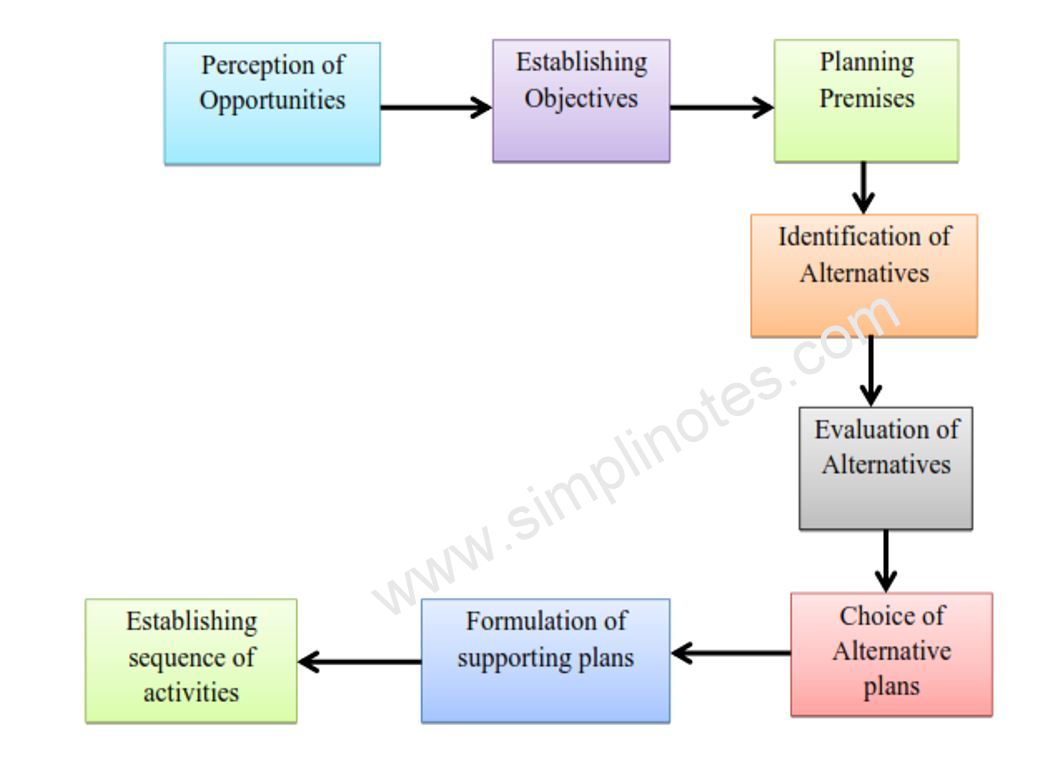Process of Planning
The planning process comprises following steps:
1. Perception of Opportunities
Perception of opportunities leads to formulation of plans by providing clue whether opportunities exist for taking up particular plans. That is why it can be considered as the beginning of planning process. Perception of opportunities includes
- A preliminary look at possible opportunities.
- Knowledge at where the organization stands in terms of its strengths and weaknesses.
- An understanding of why the organization wants to solve uncertainties.
- A vision of what it expects to gain.
2. Establishing Objectives
At this stage, major organizational and unit objectives are set. Objectives specify the results expected and indicate the end points of what is to be done. The organizational objectives should be specified in all key result areas. For example for an organization key result areas may be profitability, sales, research and development, manufacturing etc.
3. Planning Premises
After determination of organization goals, the next step is establishing planning premises i.e. the conditions under which planning activities will be undertaken. Planning premises can be external and internal environment. External environment includes political, social, technological, competitors, government policies etc. On the other hand internal factors include organizational policies, resources, ability of the organization to bear the environmental pressure. The nature of planning premises differs at different levels of organization. At the top level it is mostly externally focused and as we move down the hierarchy it changes from external to internal.
4. Identification of Alternatives
The next step is to identify various alternatives available. For example if a company has set its objectives to grow further than various options can be like expanding in the same field of business or product line, diversifying in other areas, mergers and acquisitions and so on. Within each category there can be several alternatives.
5. Evaluation of Alternatives
After identifying the various alternatives its time to evaluate them one by one . Each alternative as its positive and negative points. For example one alternative may be profitable but requires heavy investment with long gestation period another may be less profitable but involves less risk.
6. Choice of Alternatives
After the evaluation of various alternatives, the most suitable one is selected. There is another reason for choosing more than one alternative. Alternative course of action is to be undertaken in future which is not constant.
7. Formulation of Supporting plans
After formulating the basic plan various plans are derived so as to support the main plan. In an organisation there can be various derivative plans like planning for buying equipment, buying raw materials, recruiting and training personnel, developing new product etc. These derivative plans are formulated out of the main plan and therefore they support it.
8. Establishing Sequence of Alternatives
After formulating basic and derivative plans, the sequence of activities is determined so that plans are put into action. Based on plans at various levels, it can be decided who will do what and at what time. Budgets for various periods can be prepared to give plans more concrete meaning for implementation.

